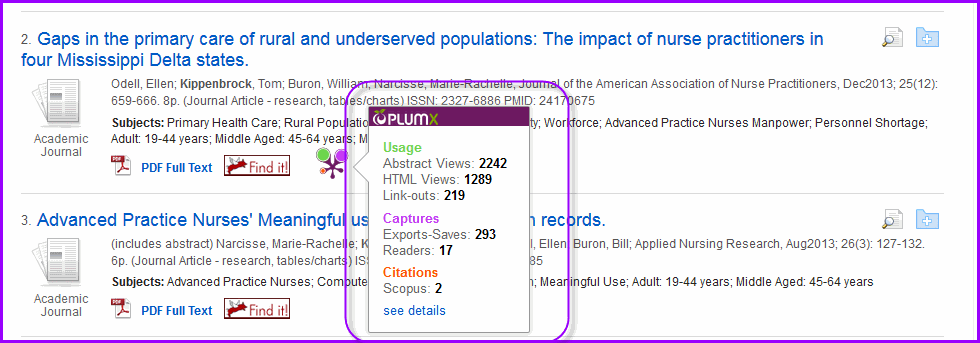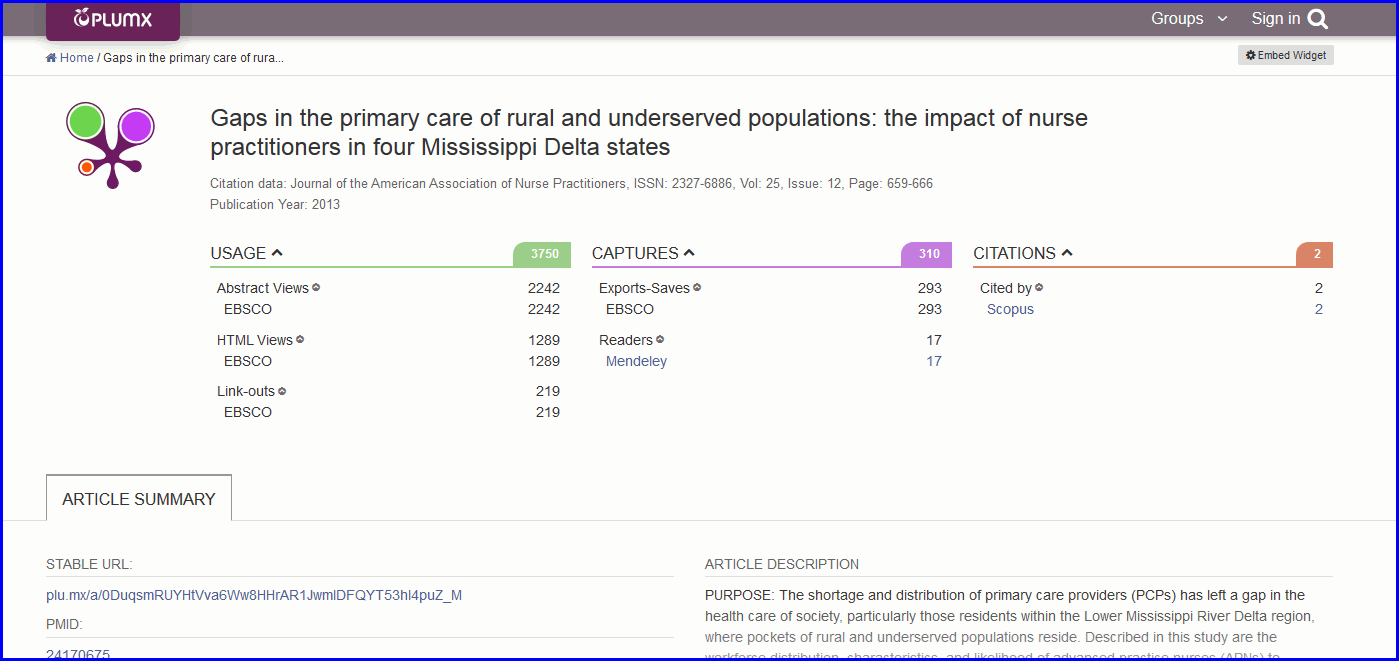
ORCID provides a persistent digital identifier (like a personal doi) for individuals to use with their name as they engage in research, scholarship, and innovation activities.
ORCID is a non-profit organization that provides open tools that enable transparent and trustworthy connections between researchers, their contributions, and affiliations.
To find out more and register, visit orcid.org.
Altmetrics attempt to broaden the scope of metrics for scholarly impact beyond the typical article citation counts. Altmetrics focus on other types of usage indicators that are possible to track thanks to modern technology and the internet. These metrics can include journal article indicators (page views, downloads, saves to social bookmarks), social media indicators (tweets, Facebook mentions), non-scholarly indicators (Wikipedia mentions) and more.

Downloads, views, bookmarking, and conversations on social media are all examples of possible emerging metrics to measure a scholar's impact. There are three major players in aggregating and providing altmetrics to researchers: Altmetrics, PlumX and ImpactStory. Each of them track similar metrics, but they are all available in different ways. Other databases, such as PubMed Central (PMC) and Web of Science, are starting to provide their own usage statistics as well.

The data that Altmetric gathers is used to calculate an Altmetric score, which is a measure of the quality and quantity of attention that an article has received. The colors surrounding the number reflect the mix of sources where the article has been mentioned. A recent article in the Annals of Emergency Medicine describes how the Altmetric score is calculated, and the potential impact and limitations of this score.

You can get Altmetric scores when reading an article on a journal or publisher's website
Several publishers and journals including Nature Publishing Group and JAMA, provide the Altmetric score. Look for the Altmetric  donut or
donut or  box when viewing articles on a journal or publisher's site.
box when viewing articles on a journal or publisher's site.
You can also use the free Altmetric bookmarklet, which allows you to get Altmetric details when reading an article online. Due to the methods that Altmetric uses to gather data, the bookmarklet may not work for every article.
Plum Analytics recently partnered with EBSCO and their product, PlumX, is now embedded into CINAHL results.
PlumX categorizes metrics into 5 types:
Now, in addition to seeing the usual "times cited" for an article in CINAHL, you may also be able to see how many times the abstract was viewed, how many times the article's pdf was requested through link-outs (find it buttons), how many times the record was exported or saved, how many times and to which citation management system the citation was saved, and if the article has been shared on social media.
To see how it works, run a search in CINAHL and look for a result that has the PlumX Metrics widget:

By hovering over the widget you can see a brief summary of metrics for the article:

If you click on see details, you will be taken to a separate page with an expanded view of the metrics for that article:

Images in this section from: Juhl, B. (2016). "Pulling out a Plum: PlumX Metrics in CINAHL." University of Arkansas 365 McIlroy Blog. https://librariesblog.uark.edu.
Once an article is made publicly available in PMC, you can go to NIHMS and see
Find PMC Access Statistics in NIHMS
An individual's Impactstory profile supplies raw metrics and 'badges' for each research product. The badges provide context for the metrics by indicating how a product has performed in both the scholarly and public arenas, compared to similar products in the same discipline.

To create your own ImpactStory profile:
Sage Policy Profiles is a new, free-to-use tool that enables researchers to discover how their work is impacting policy.
Powered by Overton, the world’s largest searchable index of policy documents, the tool allows researchers to discover where their research is cited in policy documents and easily visualize and share what they find.